Minimum: Dual Core, 2 GB RAM, Windows 7 or 8.1, DirectX11, graphics card with 256 MB RAM, DVD-ROM drive, Windows Media Player 9, ChessBase 14/Fritz 16 or included Reader and internet access for program activation. Recommended: PC Intel i5 (Quadcore), 4 GB RAM, Windows 10, DirectX11, graphics card with 512 MB RAM or more, 100% DirectX10-compatible sound card, Windows Media Player 11, DVD-ROM drive and internet access for program activation.
The editor’s top ten
1. The decisive game in Moscow: The new WCh challenger Karjakin analyses his final round win against Caruana.
2. Out-manoeuvred: Anand shows how he inflicted on defensive artist Karjakin his only defeat of the candidates tournament.
3. Theoretical advantage against Anand: Kasimdzhanov shows on video how his protégé Caruana outplayed the ex-world champion straight from the opening.
4. “Battle of the Scandis”: Daniel King demonstrates Carlsen-Grandelius with its piece sacrifice and attack worthy of a world champion (video).
5. Romanticism put to the test: Robert Ris discovers great potential for both sides in the Max Lange Attack.
6. Successful experiment: Nakamura tries a Kasimdzhanov idea and wins a sharp Petroff game.
7. How to play the Najdorf! Vachier-Lagrave explains his textbook attacking game against Giri.
8. What do you do with a pawn majority on the kingside? Strategy expert Mihail Marin shows you the options!
9. “A seemingly well protected king”: Together with Oliver Reeh destroy the black king position one move at a time.
10. A diamond against the French with 3…dxe4. Together with Simon Williams dismantle the Rubinstein Variation – „Move by Move“!
Opening Surveys Havasi: Reti Opening A11
1.Nf3 d5 2.g3 c6 3.Bg2 Bf5 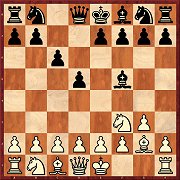
| | Gergö Havasi’s suggestion – 3...Bf5 instead of 3...Bg4 – first of all covers an enormous amount of territory. But the material soon divides and becomes easier to understand. According to Havasi the setup is easy to learn. In Part 1 4.c4 and lines with d4 are dealt with. |
Postny: Anti-Grünfeld A16
1.Nf3 Nf6 2.c4 g6 3.Nc3 d5 4.cxd5 Nxd5 5.h4 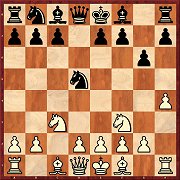
| | The Anti-Grünfeld variation with 5.h4 has become a Chinese speciality. Evgeny Postny considers ignoring the white advance with 5...Bg7 to be the best reply and points out in his conclusion that many lines remain unexplored. |
Moskalenko: Dutch Defence A80
1.d4 f5 2.Nc3 d5 3.Bg5 c6 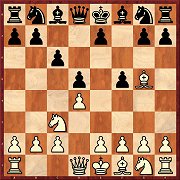
| | Our author Viktor Moskalenko considers the flexible 3...c6 better compared to the immediate 3...g6 and justifies this with a little known variation (4.Qd2! etc.). According to how White reacts to 3...c6, Black will either fianchetto his king’s bishop or not. |
Kuzmin: Caro-Kann B11
1.e4 c6 2.Nc3 d5 3.Nf3 Nf6 4.e5 Ne4 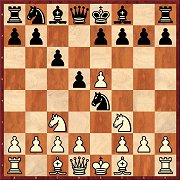
| | The Two Knights System is becoming ever more popular and so Alexey Kuzmin offers in 3...Nf6 an equally good alternative to the popular 3...Bg4 4.h3 Bxf3. It is, however, left up to each individual whether to surrender the bishop pair or as in our subject area to prefer French type positions. |
Sumets: Caro-Kann B12
1.e4 c6 2.d4 d5 3.e5 Bf5 4.Nf3 e6 5.Be2 Ne7 6.0-0 Bg6 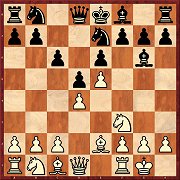
| | In his extensive article Andrey Sumets treats above all the two main moves, 7.c3 and the slightly more modern 7.Nbd2. There are numerous transpositions and subtleties to be borne in mind. Although Black should equalise, this is not always so simple in practice. |
Reinke: Sicilian Defence B20
1.e4 c5 2.b4 cxb4 3.a3 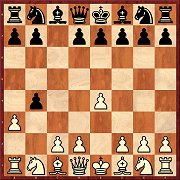
| | Spurred on by Robert Ris’ article in CBM 169 Markus Reinke wanted in his researches to go into more detail concerning the Wing Gambit. In the first part of his article he examines the continuations 3...e6, 2...Nc6, 3...Nf6 and above all 3...d5. |
Gavrikov: Sicilian Defence B22
1.e4 c5 2.c3 d5 3.exd5 Qxd5 4.d4 Bf5 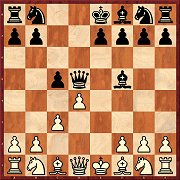
| | The natural move 4...Bf5 is played surprisingly rarely. Viktor Gavrikov has examined those lines which are possible after it; the main variation arises after 5.Nf3 Nc6 6.Be3. Black should be able to equalise and to do so he does not have to learn so much theory as is the case for other variations of the Alapin. |
Stohl: Sicilian Defence B94
1.e4 c5 2.Nf3 d6 3.d4 cxd4 4.Nxd4 Nf6 5.Nc3 a6 6.Bg5 Nbd7 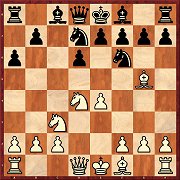
| | This Najdorf variation continues to remain popular, but has been analysed in less depth than the 6...e6 lines. Igor Stohl investigates in Part 1 of his article the continuations 7.Bc4 and 7.f4. Black appears able to hold his own against the two most frequently played moves. |
Ris: Max Lange Attack C56
1.e4 e5 2.Nf3 Nc6 3.Bc4 Nf6 4.d4 exd4 5.0-0 Bc5 6.e5 d5 7.exf6 dxc4 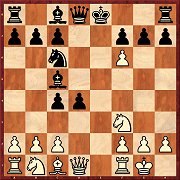
| | The forcing nature of the variations in the Max Lange Attack has always enthused opening theoreticians. In his researches Robert Ris can make fall back on practical experience in the lines, but nowadays analyses are even more influenced by strong engines. |
Szabo: Ruy Lopez C65
1.e4 e5 2.Nf3 Nc6 3.Bb5 Nf6 4.d3 Bc5 5.c3 0-0 6.0-0 d6 7.Nbd2 Ne7 8.d4 exd4 9.cxd4 Bb6 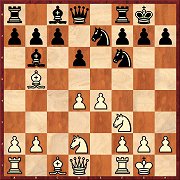
| | Sometimes variations disappear from practice (among top players) and one is not quite sure why. Recently Black has here been playing 7...Ne7 (instead of 7...a6). Krisztian Szabo has investigated the modern variation and is of the opinion that it is very playable for both sides. |
Schandorff: London System D02
1.d4 d5 2.Bf4 Nf6 3.e3 e6 4.Nf3 c5 5.c3 Nc6 6.Nbd2 Bd6 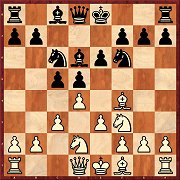
| | The fact that the London System has found its way into the games of the chess elite fascinated Lars Schandorff so much that he has written an article about it. In the diagram 7.Bg3 is the main move, but after 7...0-0 8.Bd3 b6 White achieves surprisingly little with 9.Ne5 and then f4. |
Bronznik: Chigorin Defence D07
1.d4 d5 2.c4 Nc6 3.Nf3 Bg4 4.Nc3 e6 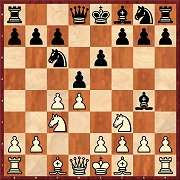
| | In the second part of his series on the Chigorin Defence Valeri Bronznik puts under the microscope the development of the bishop to g5. This can be played with or without the insertion of the exchange on d5. Black has no major problems, but he must be prepared for a long positional struggle. |
Marin: Semi-Slav D45
1.d4 d5 2.c4 e6 3.Nc3 c6 4.Nf3 Nf6 5.e3 Nbd7 6.Qc2 Bd6 7.b3 0-0 8.Be2 b6 9.0-0 Bb7 10.Bb2 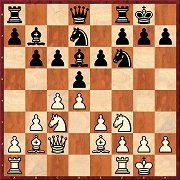
| | With the early b3 White somewhat restricts Black’s options in this Anti-Meran variation. Mihail Marin spots “middlegames with a more stable character” and in his extensive investigations shows himself to be optimistic for the side with White. |
Krasenkow: Grünfeld Defence D80
1.d4 Nf6 2.c4 g6 3.Nc3 d5 4.e3 Bg7 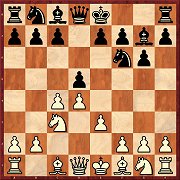
| | 4.e3 is without doubt a modest attempt at combatting the Grünfeld Defence. Michal Krasenkow is convinced that Black has no trouble in equalising. Nevertheless, various variations require to be taken more seriously than just for the effect of surprise. |
|















